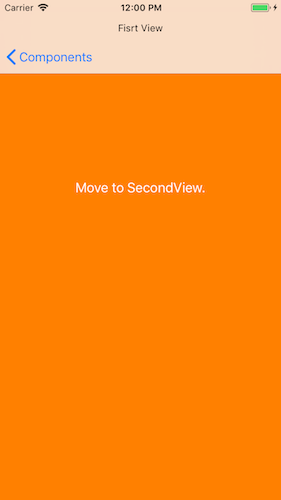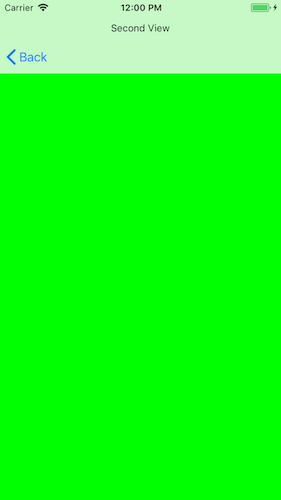UINavigationController 사용하기
UINavigationController를 사용하여 ViewController를 이동해 보았습니다.
pushViewController를 하게되면 ViewController stack에 추가되고
popViewController를 하게되면 ViewController stack에서 사라지게 됩니다.
navigationController에서 제공하는 함수를 사용하여 ViewController를 이동할 수 있습니다.
1. func pushViewController(UIViewController, animated: Bool)
해당 ViewController로 이동하고 stack에 추가합니다.
2. func popViewController(animated: Bool) -> UIViewController?
stack에 쌓여있는 이전 ViewController로 이동하게 됩니다. 현재 ViewController는 사라집니다.
3. func popToRootViewController(animated: Bool) -> [UIViewController]?
navigationController에서 지정해놓은 Root ViewController로 이동합니다.
stack에 쌓여있는 ViewController는 모두 사라지게 됩니다.
4. func popToViewController(UIViewController, animated: Bool) -> [UIViewController]?
지정된 ViewController로 이동하고 전에 있던 ViewController들은 stack에서 사라집니다.
아래 이미지와 소스코드를 비교해보시면 좀 더 이해하기 편합니다.
궁금하신점은 댓글로 달아주세요.
해피코딩 :)
Preview


Source
| // | |
| // FirstViewController.swift | |
| // UIKit component handling | |
| // | |
| // Created by Taehyeon Han on 2018. 8. 3.. | |
| // Copyright © 2018년 calmone. All rights reserved. | |
| // | |
| import UIKit | |
| class FirstViewController: UIViewController { | |
| lazy var button: UIButton = { | |
| // Generate UIButton. | |
| let width: CGFloat = 300 | |
| let height: CGFloat = 100 | |
| let posX: CGFloat = (self.view.bounds.width - width)/2 | |
| let posY: CGFloat = 200 | |
| let button = UIButton(frame: CGRect(x: posX, y: posY, width: width, height: height)) | |
| button.backgroundColor = UIColor.orange | |
| button.layer.masksToBounds = true | |
| button.layer.cornerRadius = 20.0 | |
| button.setTitle("Move to SecondView.", for: .normal) | |
| button.addTarget(self, action: #selector(buttonPressed(_:)), for: .touchUpInside) | |
| return button | |
| }() | |
| override func viewDidLoad() { | |
| super.viewDidLoad() | |
| // Do any additional setup after loading the view. | |
| // Set the controller's title. | |
| self.navigationItem.prompt = "Fisrt View" | |
| // Set the background color of the view to Cyan. | |
| self.view.backgroundColor = .orange | |
| // Add UIButton on view | |
| self.view.addSubview(self.button) | |
| } | |
| override func didReceiveMemoryWarning() { | |
| super.didReceiveMemoryWarning() | |
| // Dispose of any resources that can be recreated. | |
| } | |
| // UIButton Event. | |
| @objc private func buttonPressed(_ sender: Any) { | |
| // Define the view to move to. | |
| let secondViewController = SecondViewController() | |
| // Move to SecondView. | |
| self.navigationController?.pushViewController(secondViewController, animated: true) | |
| } | |
| } |
| // | |
| // SecondViewController.swift | |
| // UIKit component handling | |
| // | |
| // Created by Taehyeon Han on 2018. 8. 3.. | |
| // Copyright © 2018년 calmone. All rights reserved. | |
| // | |
| import UIKit | |
| class SecondViewController: UIViewController { | |
| override func viewDidLoad() { | |
| super.viewDidLoad() | |
| // Do any additional setup after loading the view. | |
| // Set the controller's title. | |
| self.navigationItem.prompt = "Second View" | |
| // Set the background color of the view to Cyan. | |
| self.view.backgroundColor = .green | |
| } | |
| override func didReceiveMemoryWarning() { | |
| super.didReceiveMemoryWarning() | |
| // Dispose of any resources that can be recreated. | |
| } | |
| } |
Github
https://github.com/calmone/iOS-UIKit-component
Reference
- UINavigationController
https://developer.apple.com/documentation/uikit/uinavigationcontroller



